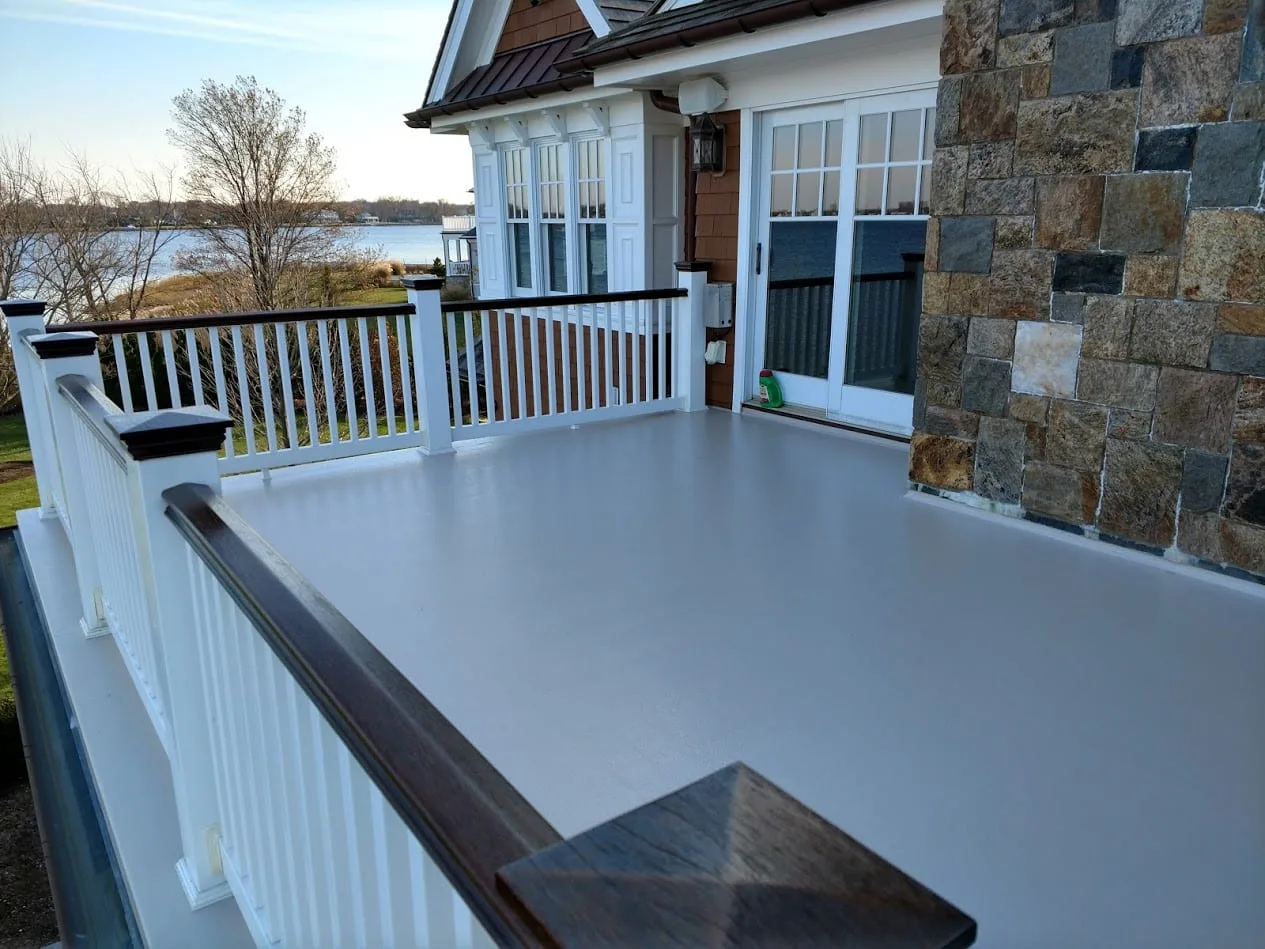Introduction
Wet stairs, rain‑slicked mezzanines, and oily service decks are more than housekeeping headaches—they are OSHA recordables waiting to happen. Non skid fiberglass decks replace moisture‑sensitive wood with pultruded, grit‑surfaced FRP panels that keep industrial teams upright and productive. Unicomposite, an ISO‑certified pultrusion specialist, manufactures these panels in its own Chinese facility, giving engineers and buyers bulk pricing leverage and true custom‑profile support. The seven reasons below explain why plant managers, EPC contractors, and OEM fabricators are swapping lumber for fiberglass to safeguard crews and bottom lines.

non skid fiberglass decks
Reason 1 – Superior Slip Resistance in Wet & Oily Environments
1.1 – Gritted fiberglass surfaces vs. OSHA 1910 benchmarks
| Surface Type | Static CoF (Wet) | OSHA Minimum* | Pass/Fail |
|---|---|---|---|
| Gritted FRP panel | 0.68 | 0.50 | ✅ Pass |
| Hardwood plank | 0.42 | 0.50 | ❌ Fail |
| Painted steel plate | 0.46 | 0.50 | ❌ Fail |
| *OSHA 1910 walking‑working surfaces guideline |
1.2 – Who benefits
Food processors, marine terminals, and chemical packaging lines routinely hose down production floors. A Louisiana shrimp‑processing plant reported a 45 % drop in slip incidents within six months of installing Unicomposite gritted planks. “Our workers stopped worrying about every puddle and focused on throughput,” its safety supervisor noted.
Reason 2 – Corrosion & Chemical Durability Outlasts Wood
2.1 – Resin systems that shrug off salt spray, acids, and alkalis
Vinyl‑ester and isophthalic polyester resins form an impermeable shell around glass fibers. Accelerated ASTM B117 salt‑fog tests show no structural loss after 10,000 hours, whereas pressure‑treated pine lost 27 % strength.
2.2 – Field performance: coastal power‑station walkways
An anonymized Florida utility replaced rotting boardwalks on its cooling‑tower perimeter with non skid fiberglass decks in 2015. A decade later, inspection reports record zero soft spots, saving an estimated $140 k in replacement wood and labor.
Reason 3 – Proven Life‑Cycle ROI & Lower Total Cost of Ownership
3.1 – 25‑year service‑life studies vs. 5‑ to 7‑year wood cycles
Capital cost: Fiberglass panel $18 / sq ft vs. treated lumber $10 / sq ft
Replacement interval: 25 years vs. 6 years
Cumulative 25‑year spend per 1,000 sq ft: $18 k FRP vs. $42 k wood (materials only)
3.2 – Quote
“Switching to FRP cut our decking budget by 60 % over a decade while freeing maintenance crews for higher‑value work,” says the facilities director at a Midwestern equipment OEM.
Reason 4 – Lightweight Panels Speed Up Installation
4.1 – 60 % lighter than timber
A 1.5″‑thick gritted FRP plate weighs roughly 3.4 lb/ft², versus 8.2 lb/ft² for southern yellow pine. Lighter panels mean:
Smaller cranes or man‑lifts
Two‑person hand carry of 12′ lengths (no forklifts obstructing aisles)
Lower freight costs—often LCL instead of full‑truckload
4.2 – Weekend wastewater‑plant retrofit
A Colorado municipality replaced 3,000 sq ft of trickling‑filter walkways. Crews installed prefabricated fiberglass panels in two weekend shifts, avoiding weekday shutdown penalties that would have exceeded $25 k.
Reason 5 – Minimal Maintenance Keeps Lines Running
5.1 – Simple wash‑down vs. annual sealing/painting
Wood decks demand yearly sealing, sanding, and spot replacement. Non skid fiberglass decks need only periodic detergent wash‑downs. A time‑lapse comparison at an automotive stamping plant showed 95 % less labor over five years.
5.2 – Production continuity
For high‑volume assembly lines, every maintenance outage is lost margin. Reducing deck upkeep from days to hours keeps takt times stable and KPI dashboards green.
Reason 6 – Custom Profiles, Colors & Safety‑Zoning Options
6.1 – Pultruded grates, plates, and beams
Unicomposite’s in‑house tooling shop machines custom dies in as little as four weeks, enabling buyers to match legacy hole patterns or integrate cable trenches directly into deck panels.
6.2 – Color‑coding for traffic lanes
ANSI Z535 recommends visual separation between pedestrian paths and forklift zones. Fiberglass panels accept integral pigments—no surface paint to flake—so yellow walkways and red hazard borders remain vibrant for decades.
Reason 7 – Fire, Smoke & Environmental Compliance
7.1 – ASTM E‑84 flame spread & low smoke toxicity
Fire‑retardant FRP formulations achieve flame‑spread index ≤ 25, comparable to concrete, while emitting 70 % less smoke than pressure‑treated wood under the same load.
7.2 – Sustainability metrics
Glass fibers are recyclable, and long service life cuts landfill waste by half over 25 years compared to multiple plywood tear‑outs. That longevity bolsters ESG scorecards for publicly traded manufacturers.
Conclusion
Seven measurable advantages—traction, corrosion resistance, ROI, ease of install, low maintenance, customization, and compliance—explain why procurement leaders are moving away from timber. Talk with Unicomposite’s engineering team today to specify panels, grating, or hybrid profiles that fit your next project. Request a rapid quote or design review and put safer, longer‑lasting decks underfoot.
Frequently Asked Questions
Q1. How long do non skid fiberglass decks actually last?
Lab and field data suggest a 25‑plus‑year service life under typical industrial loads, far exceeding wood’s 5–7 years.
Q2. Can I match an existing steel frame?
Yes. Pultruded FRP plates can be pre‑drilled or supplied with embedded stainless inserts to align with legacy bolt patterns.
Q3. Are fiberglass decks safe around food processing lines?
Food‑grade resin systems meet FDA 21 CFR 177.2420 for indirect contact, and grit surfacing prevents slips even when floors are wet with oils or brine.
Q4. What are the lead times for custom colors or profiles?
Standard planks ship in 2 weeks; custom die profiles typically add 4–6 weeks, including prototype approval.
Q5. How do fiberglass panels perform in extreme cold?
Glass‑fiber composites retain more than 90 % of room‑temperature strength at −40 °C, and the grit surface stays effective without becoming brittle.




























